Dire wolves vanished more than 12,000 years ago but science has brought them back, and now, the massive creatures made famous by Game of Thrones have doubled in size in mere months.
Romulus, Remus, and Khaleesi, the first genetically engineered dire wolf pups, are growing bigger than most gray wolves.
The dire wolves were created by Colossal Biosciences, a Texas-based company using cutting-edge genetic engineering to bring extinct species back to life, including the woolly mammoth, dodos, and Tasmanian tigers.
In a newly released video, the team revealed that Romulus and Remus, the two male pups, are now over six months-old and weigh more than 90 pounds each.
That is about 20 percent larger than a standard gray wolf, making them the closest thing to a real-life dire wolf in more than 10,000 years.
Romulus and Remus were born last year on October 1, while Khalessi was born earlier this year in January, making her the youngest of the pact.
In the video uploaded by Colossal, the two male pups were seen running and playing together, chasing each other, and showing friendly behavior which reflects healthy social bonding.
They seemed comfortable in their new outdoor surroundings after leaving the lab.
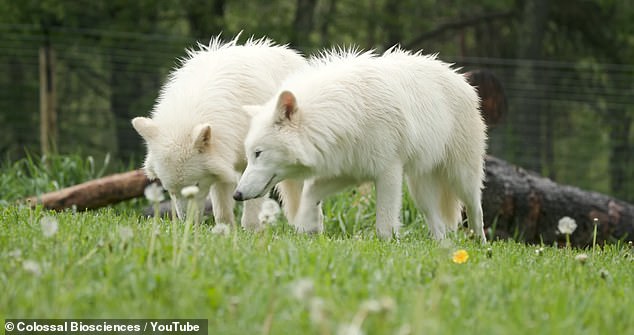
Romulus, Remus, and Khaleesi, the first genetically engineered dire wolf pups, are growing bigger than most gray wolves
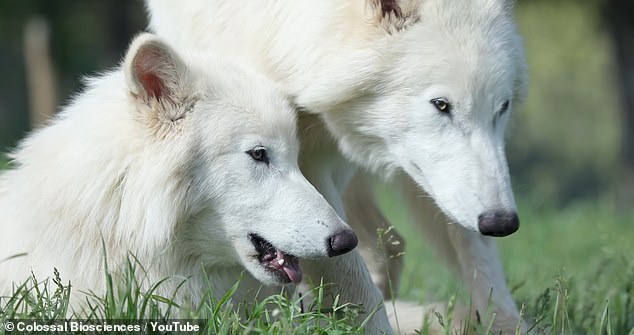
The dire wolves were created by Colossal Biosciences, a Texas-based company using cutting-edge genetic engineering to bring extinct species back to life, including the woolly mammoth, dodos, and Tasmanian tigers
Matt James, Chief Animal Officer at Colossal, said: ‘They’re nice large wolves that are much more representative of what we saw in the ancient specimens.’
The pups are now getting ready for their first full medical checkup, which will include CT scans and blood tests to study their bones, muscles, and internal growth.
Scientists say these physical changes, like their unusually large size, show that the dire wolf genes engineered into their DNA before birth are now actively shaping their development.
The team also gave an update on Khaleesi, the only female of the trio, describing her as ‘a little smaller, a little younger.’
According to researchers, the female wolves are naturally smaller and tend to grow at a slightly slower pace compared to males.
‘She currently weighs about 35 pounds, but is still tracking about 10 to 15 percent larger than what we have seen in gray wolves,’ James said.
Khaleesi is being kept separate for now to ensure she’s big enough to safely join her older brothers. The team is carefully watching her growth before moving to a gradual, staged introduction.
In the video, James described the pups’ growth as impressive, noting they have hit all expected milestones for development.
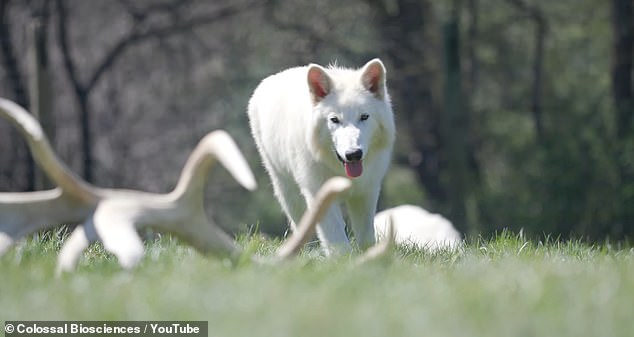
In the video, James described the pups’ growth as impressive, noting they have hit all expected milestones for development
Currently, the pups are eating an adult diet of a high quality dog kibble, game-grade ground meat, and bones to help them develop hunting instincts.
Paige McNichol, manager of animal husbandry at Colossal, said: ‘Remus is really taking that alpha role, and Romulus is stepping down and being more subordinate in the pack.’
Although Remus is slightly smaller than Romulus, he’s proving to be more dominant. He’s constantly watching his surroundings and thinking before acting, a behavior McNichol described as crafty and calculated.
That makes him more of a strategic leader, while Romulus, though physically larger, tends to charge ahead first but follows Remus’s lead during interactions, a classic behavior among beta males.
‘This dynamic may change as they grow, especially when their younger pack mate Khaleesi is introduced,’ McNichol said.
The team is carefully and slowly introducing her to Romulus and Remus, starting with visits through fences.
‘We’re looking for really strong indicators that they are socially compatible,’ said James.
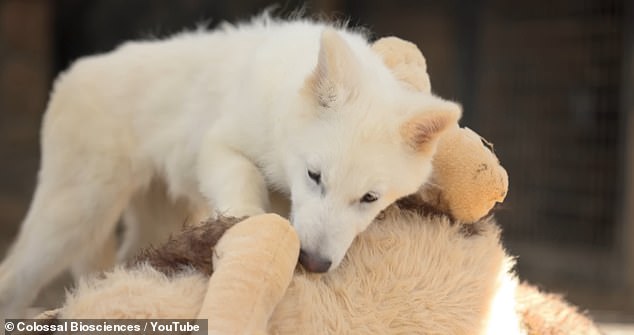
Six months ago, Colossal made headlines when it first announced the births of Romulus, Remus, and Khaleesi, claiming to have ‘brought back’ the dire wolf
The eventual goal is to release all three onto a private preserve where they can live as a functioning pack.
Six months ago, Colossal made headlines when it first announced the births of Romulus, Remus, and Khaleesi, claiming to have ‘brought back’ the dire wolf.
The animals, made famous by Game of Thrones, last roamed North America more than 12,000 years ago before going extinct.
These pups are lab-made hybrid wolves. They are genetically modified gray wolves, engineered to revive the ancient predators using advanced DNA-editing tools.
Scientists compared the ancient dire wolf’s DNA to a gray wolf’s, identifying 14 distinct genes.
They made 20 changes in gray wolf to match the dire wolf’s DNA, resulting in larger, more resembling wolves.
Nic Rawlence, an associate professor and director of the Otago Paleogentics Laboratory at the University of Otago, told DailyMail.com: ‘To truly de-extinct something, you would have to clone it.’
‘The problem is we can’t clone extinct animals because the DNA is not well enough preserved,’ he said.
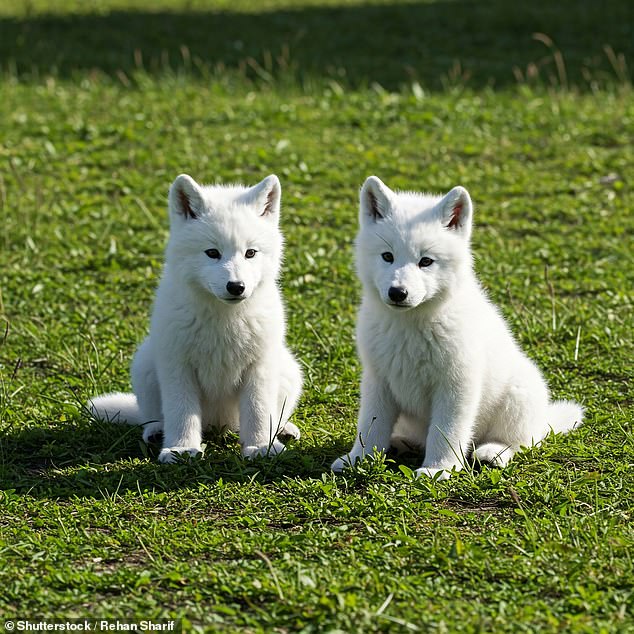
While rare, fatal wolf attacks have occurred, 26 were reported worldwide between 2002 and 2020, raising questions about the potential risks if larger, dire wolf-like hybrids were ever released into the wild
The process started by extracting ancient DNA from fossils and comparing it to the gray wolf’s DNA.
Scientists then made changes into gray wolf’s DNA to mimic the dire wolf, and then they implanted it into a surrogate mother, giving birth to a genetically made dire pup.
Romulus, Remus, and Khlaessi were born using this method, which Colossal calls part of its ‘de-extinction toolkit.’
The company says that their broader plan is to correct past ecological damage caused by human activity, including overhunting and habitat destruction.
‘We’re committed to rectifying the past and rehabilitating nature on a global scale,’ the company’s website states.
Experts have warned that creating large carnivores, even in captivity, could have unintended consequences.
Between 2002 and 2020, there were 26 reported fatal wolf attacks on humans globally, according to the Norwegian Institute for Nature Research.
‘If released into the wild in large enough numbers to establish a self-sustaining population, this new wolf could potentially take down prey larger than that hunted by gray wolves,’ said Rawlence.
He also warned that if these lab-made hybrid wolves were to breed with wild populations, their altered genes could spread, disrupting ecosystems.
For now, the team says the final size is uncertain, but they are looking for signs that the pups may continue growing toward the size of their ancient counterparts.
Historically, extinct dire wolves stood about three feet tall at the shoulder, reached lengths of up to six feet, which makes them 30 to 40 percent heavier than today’s gray wolves.
Fossil evidence suggests they could weigh between 130 and 150 pounds, according to the National Park Service.
